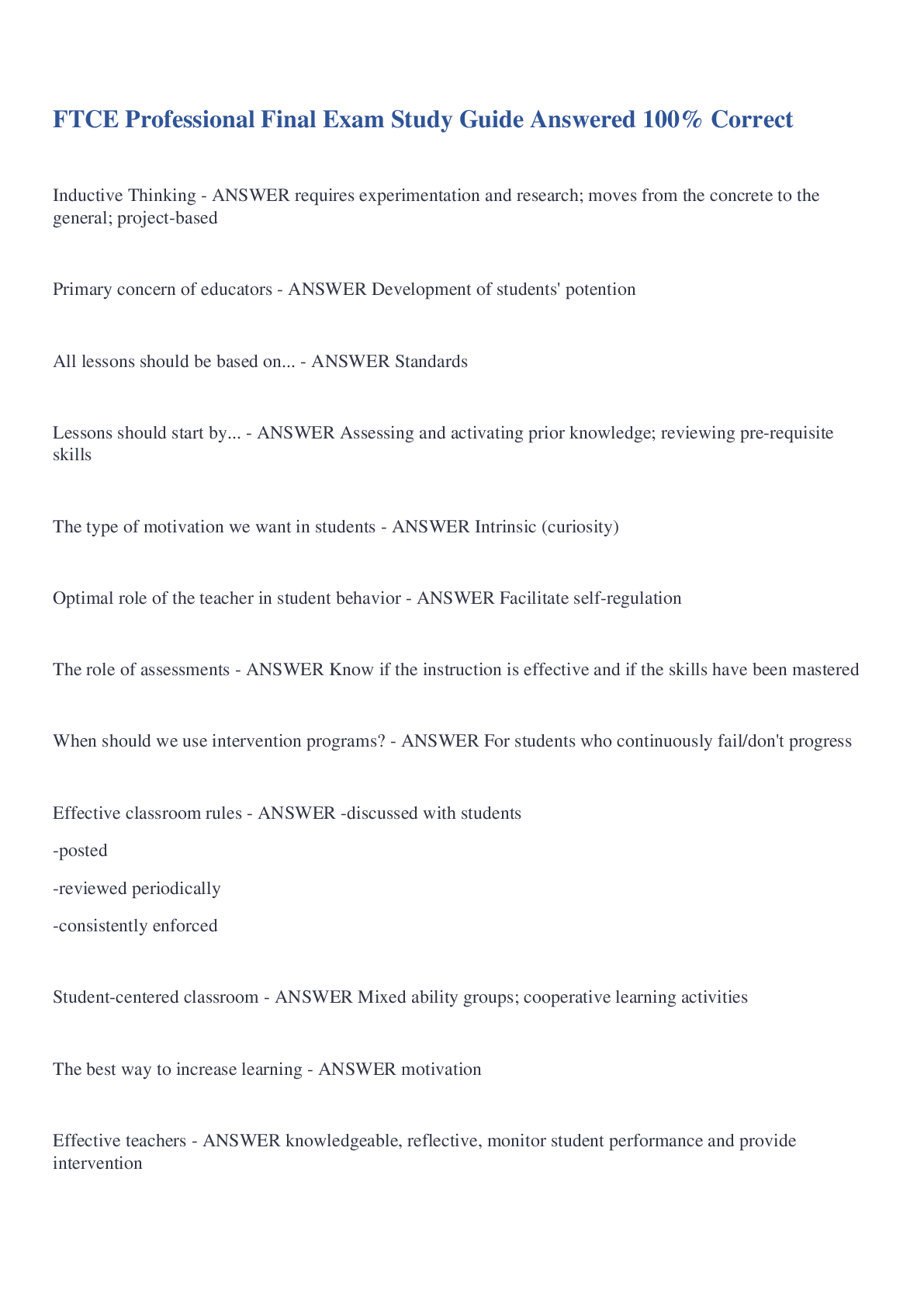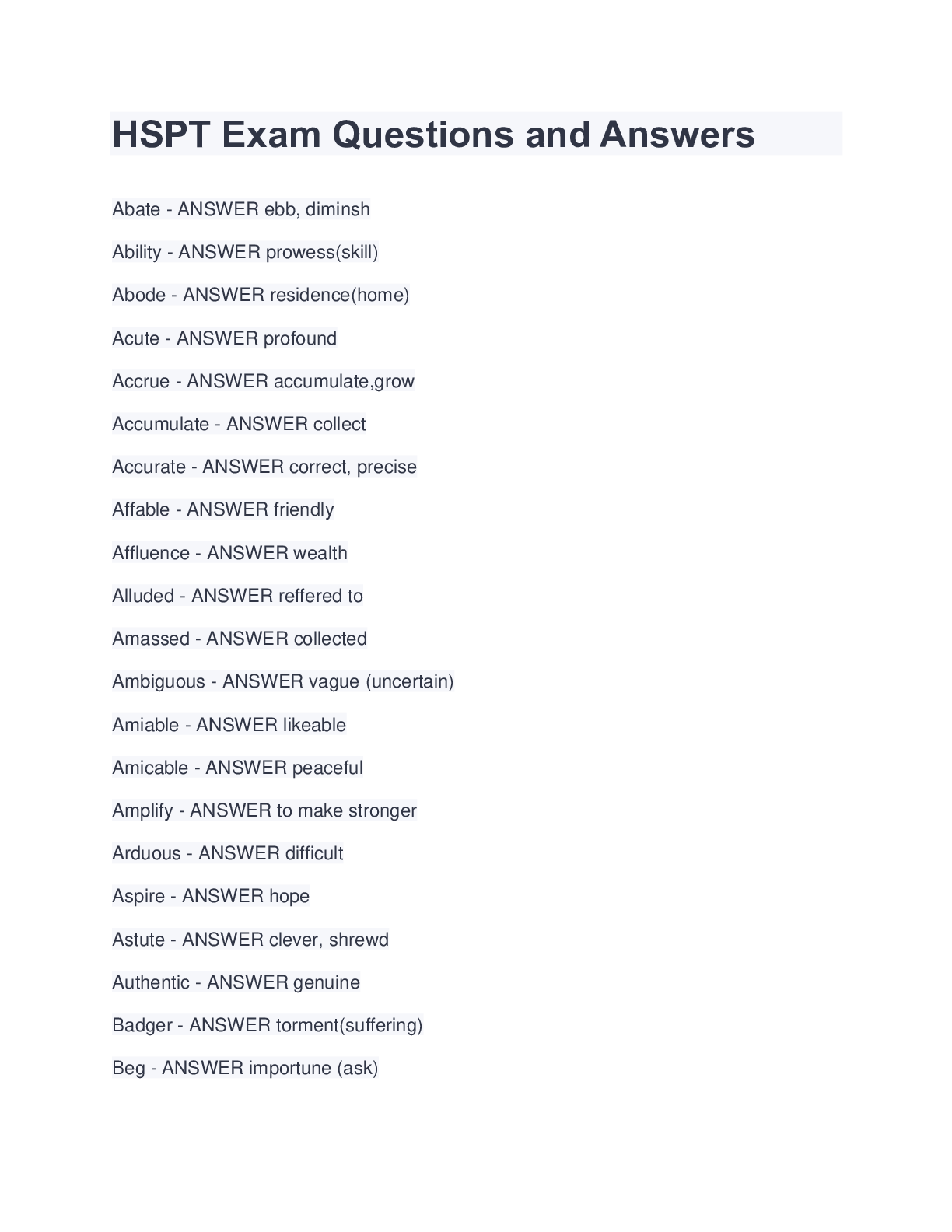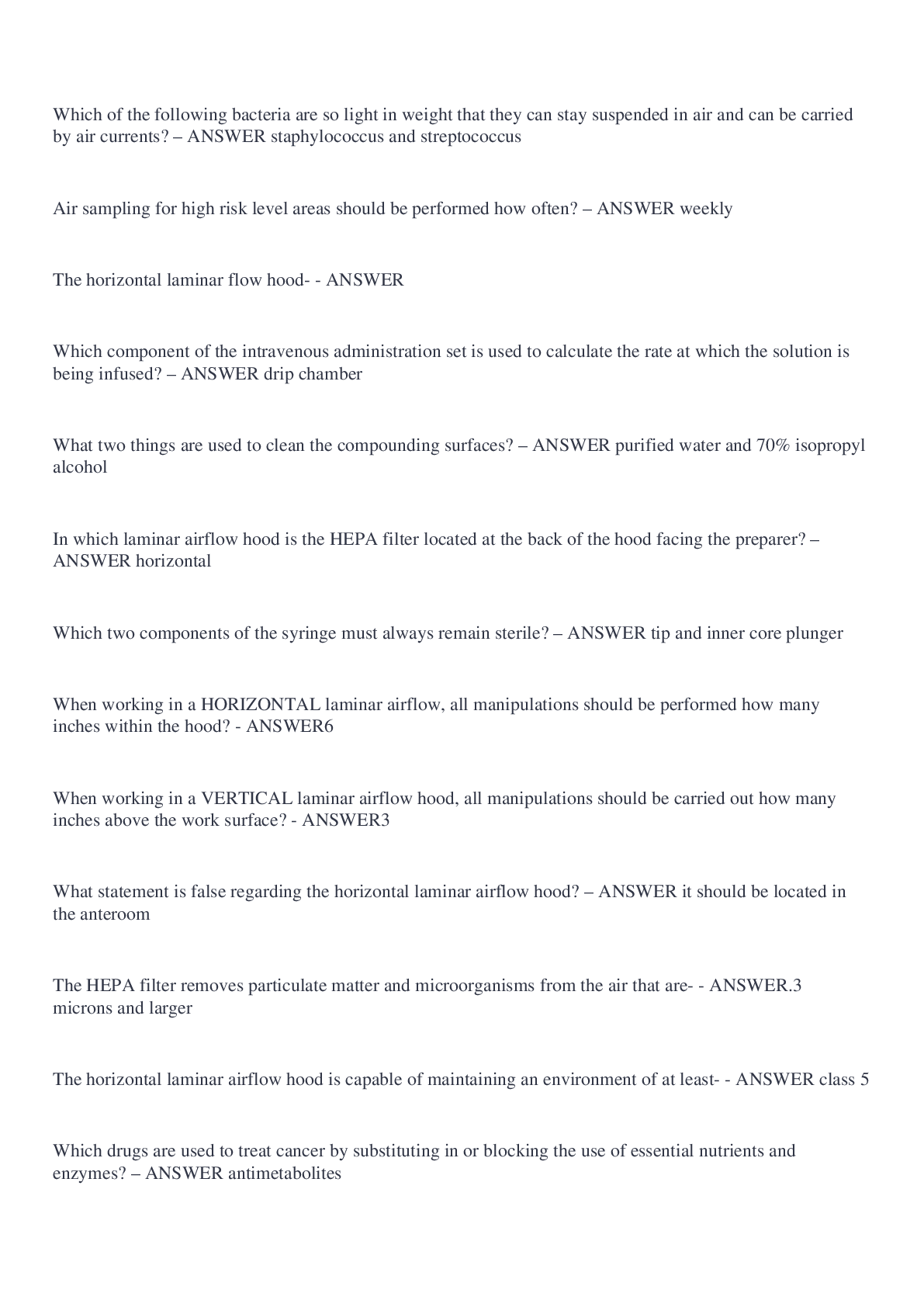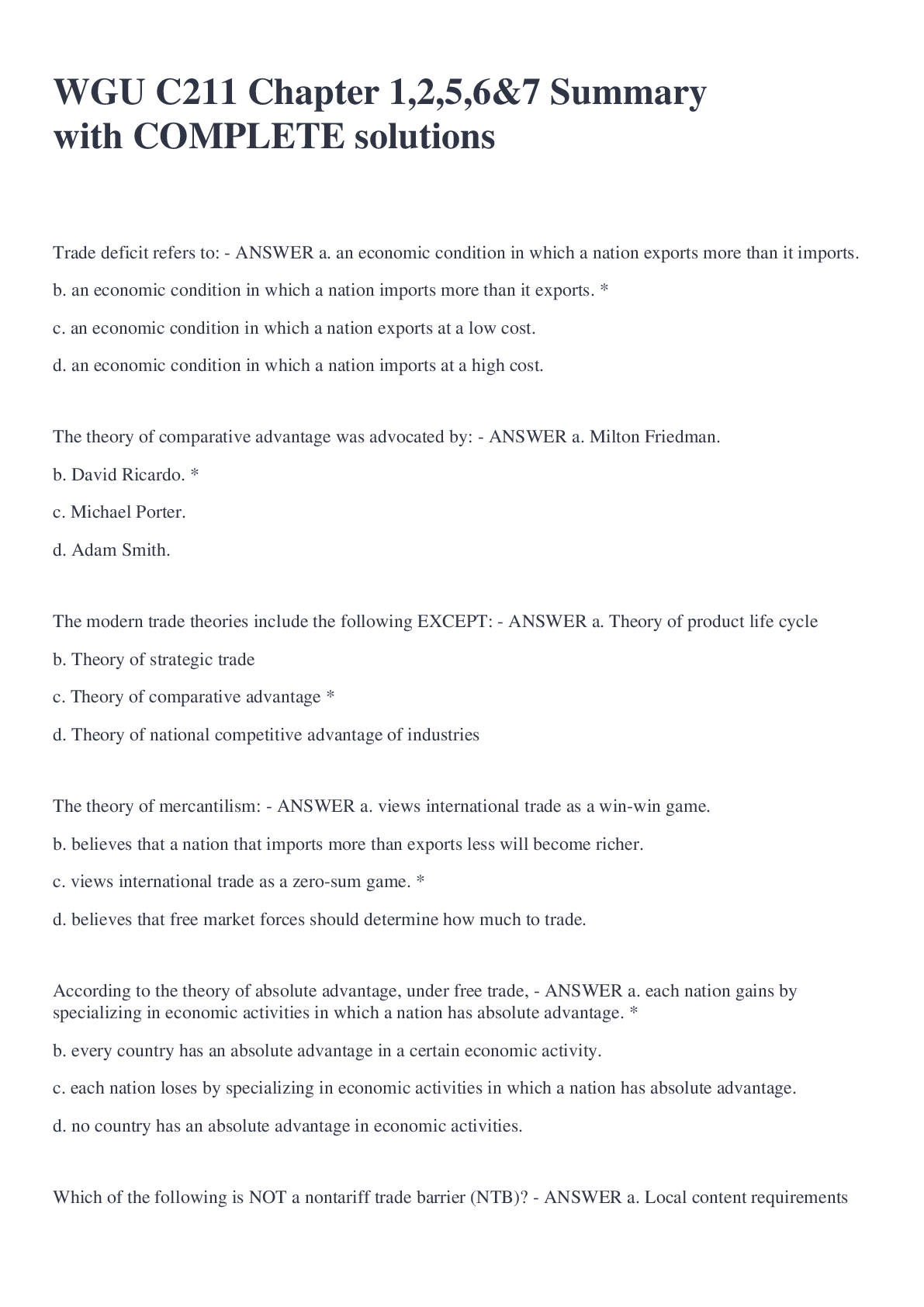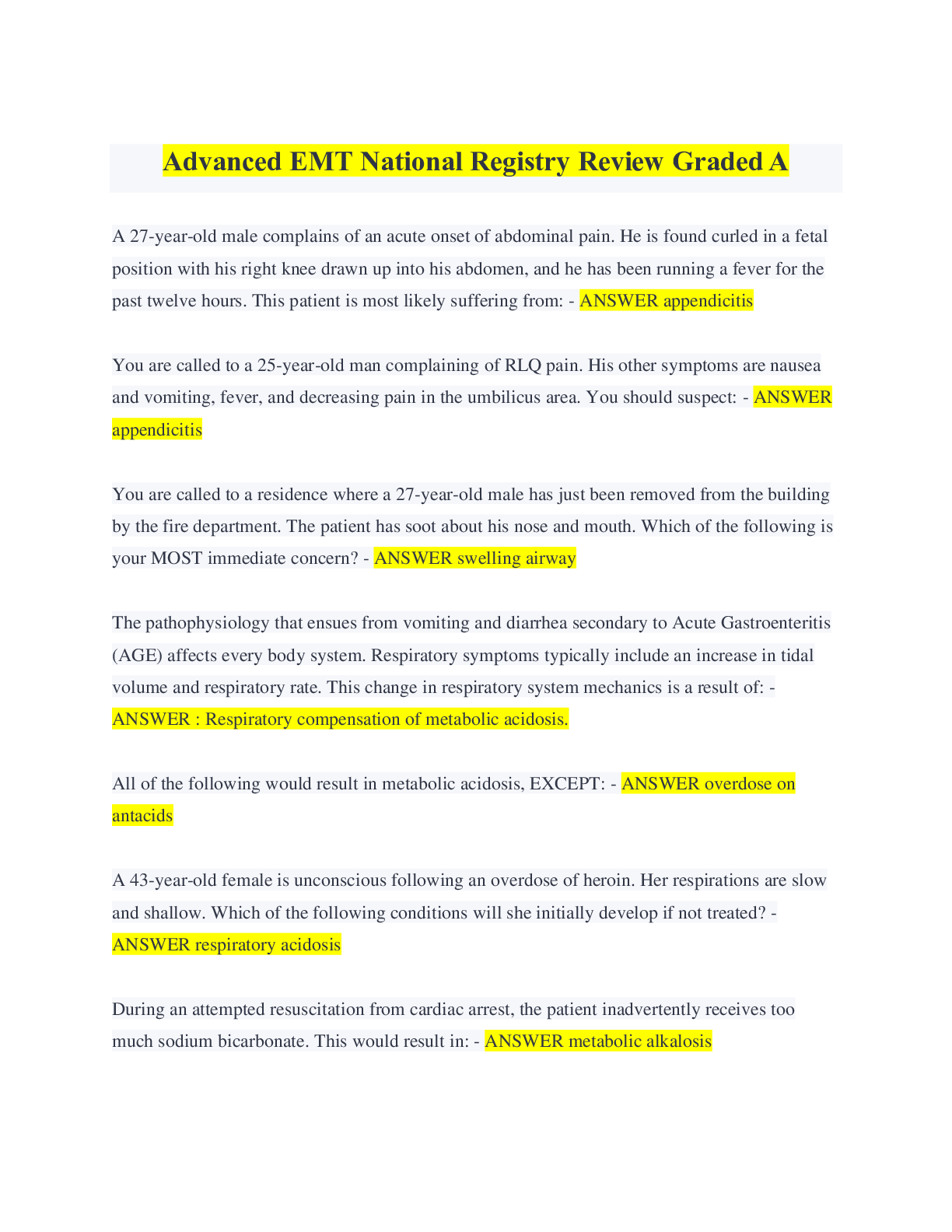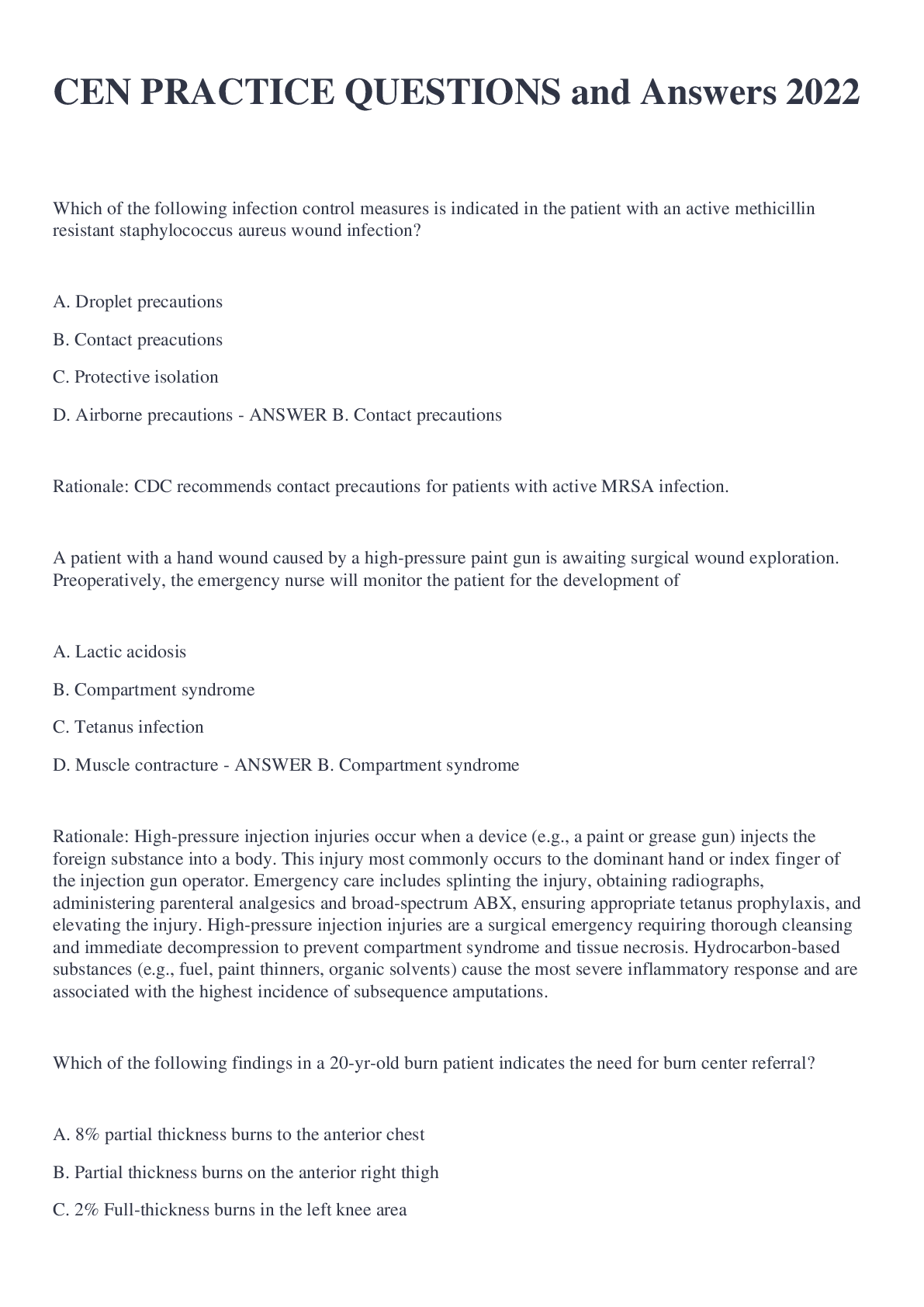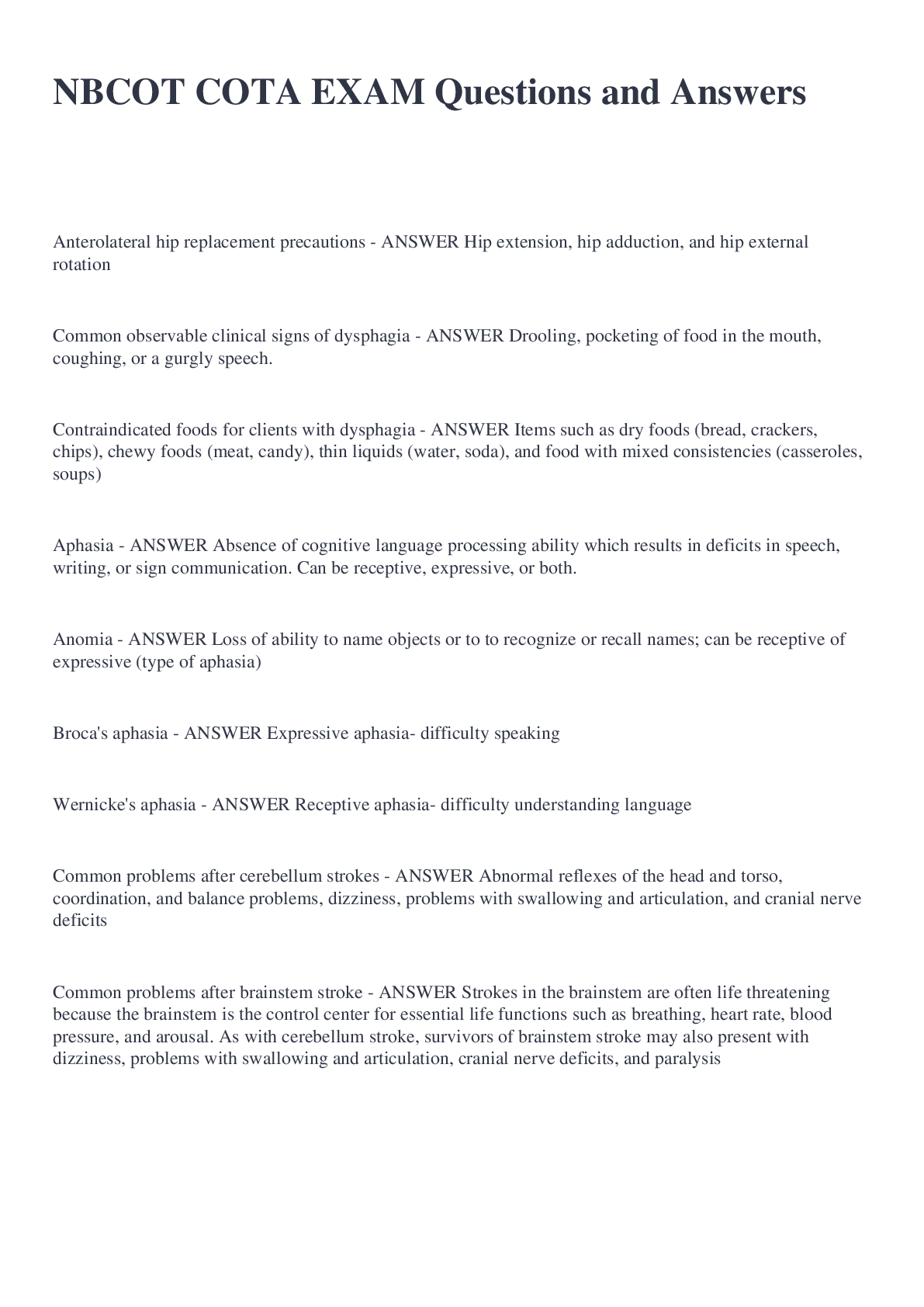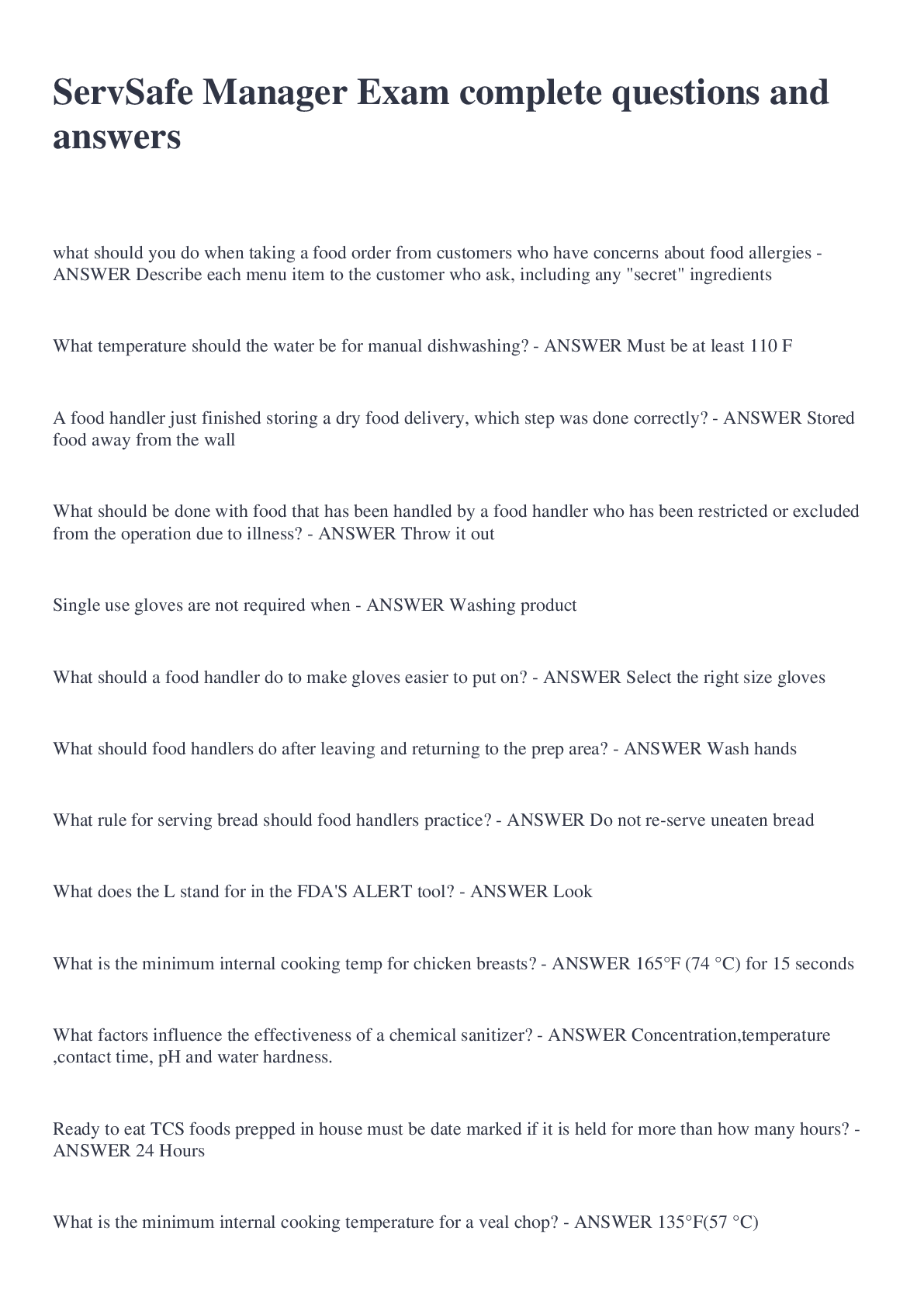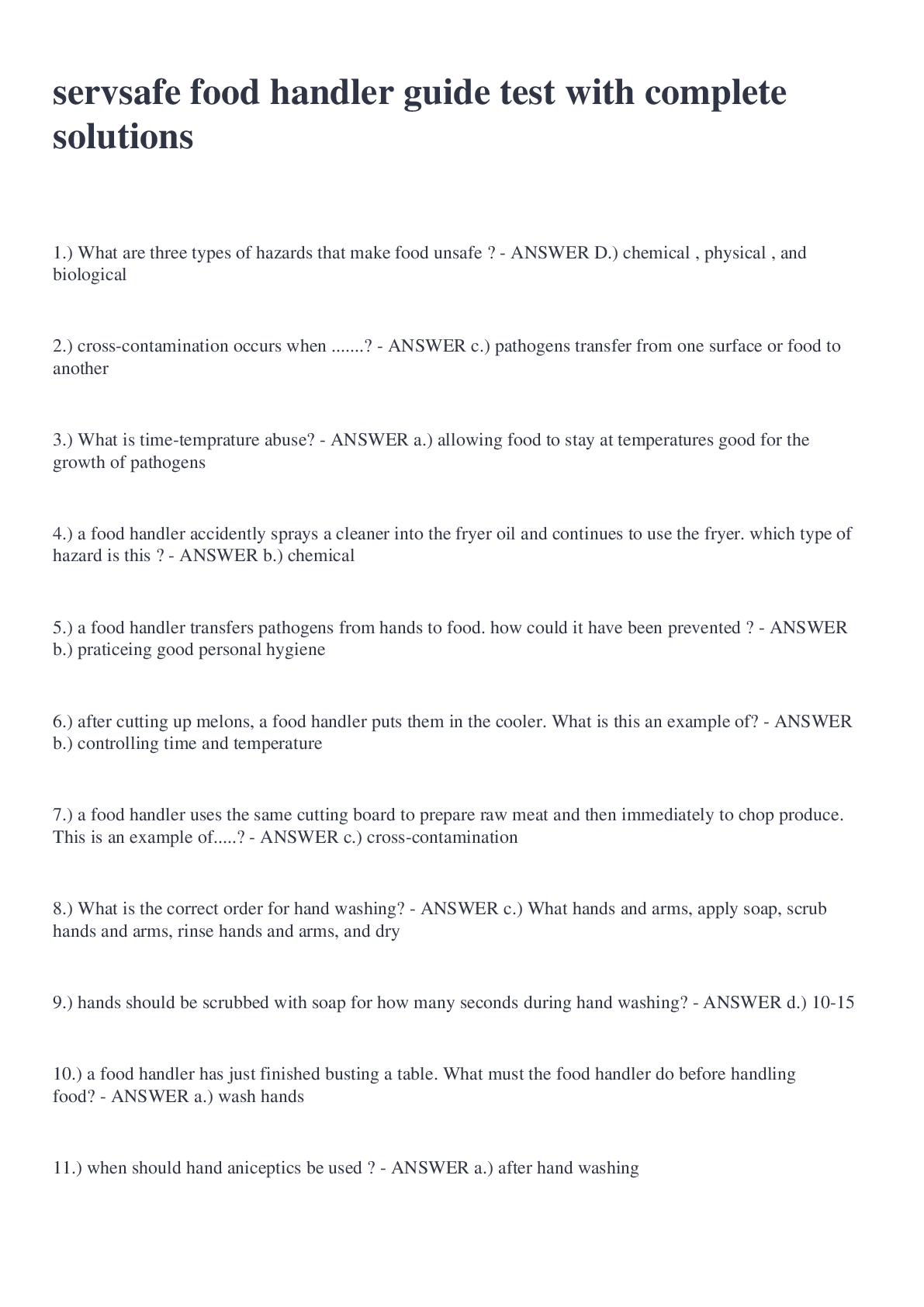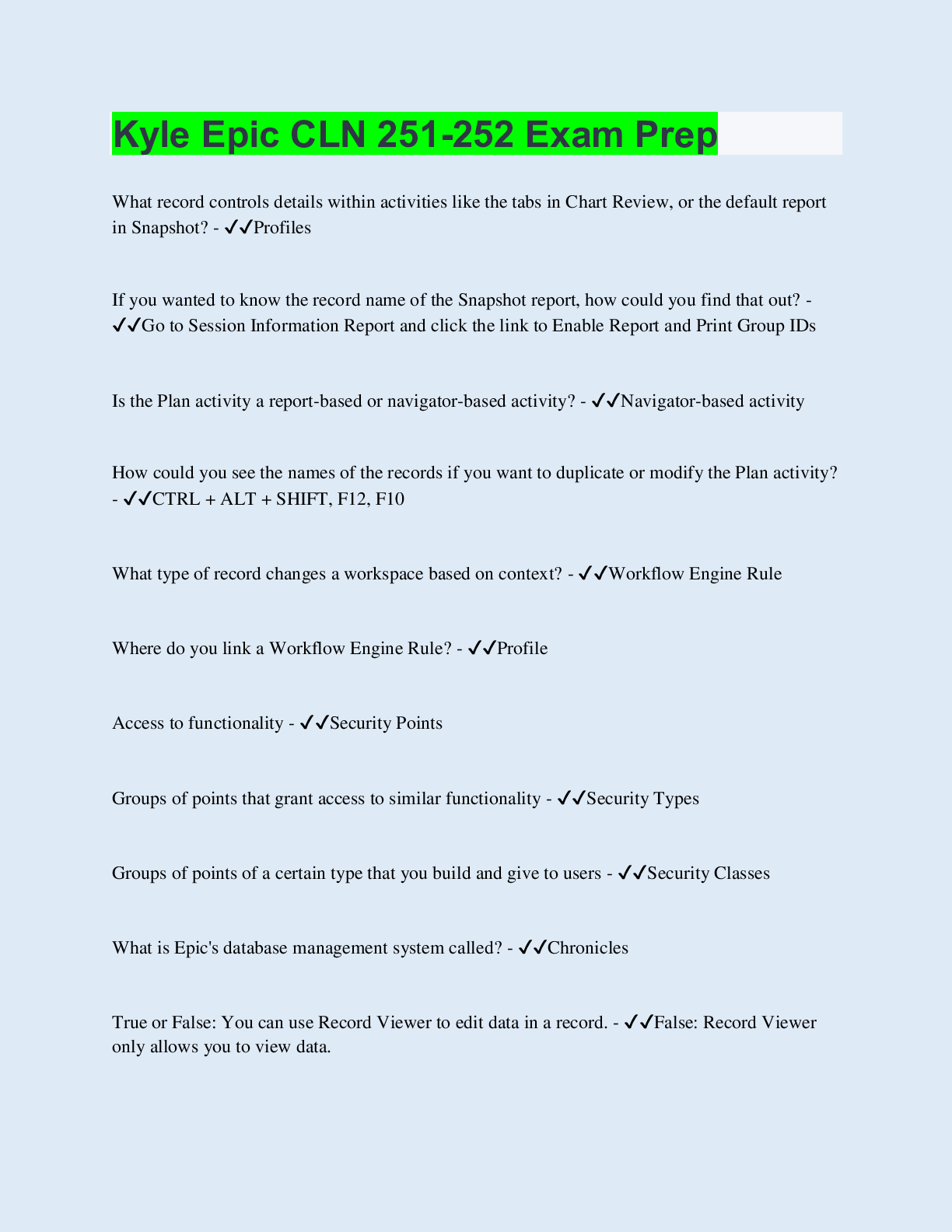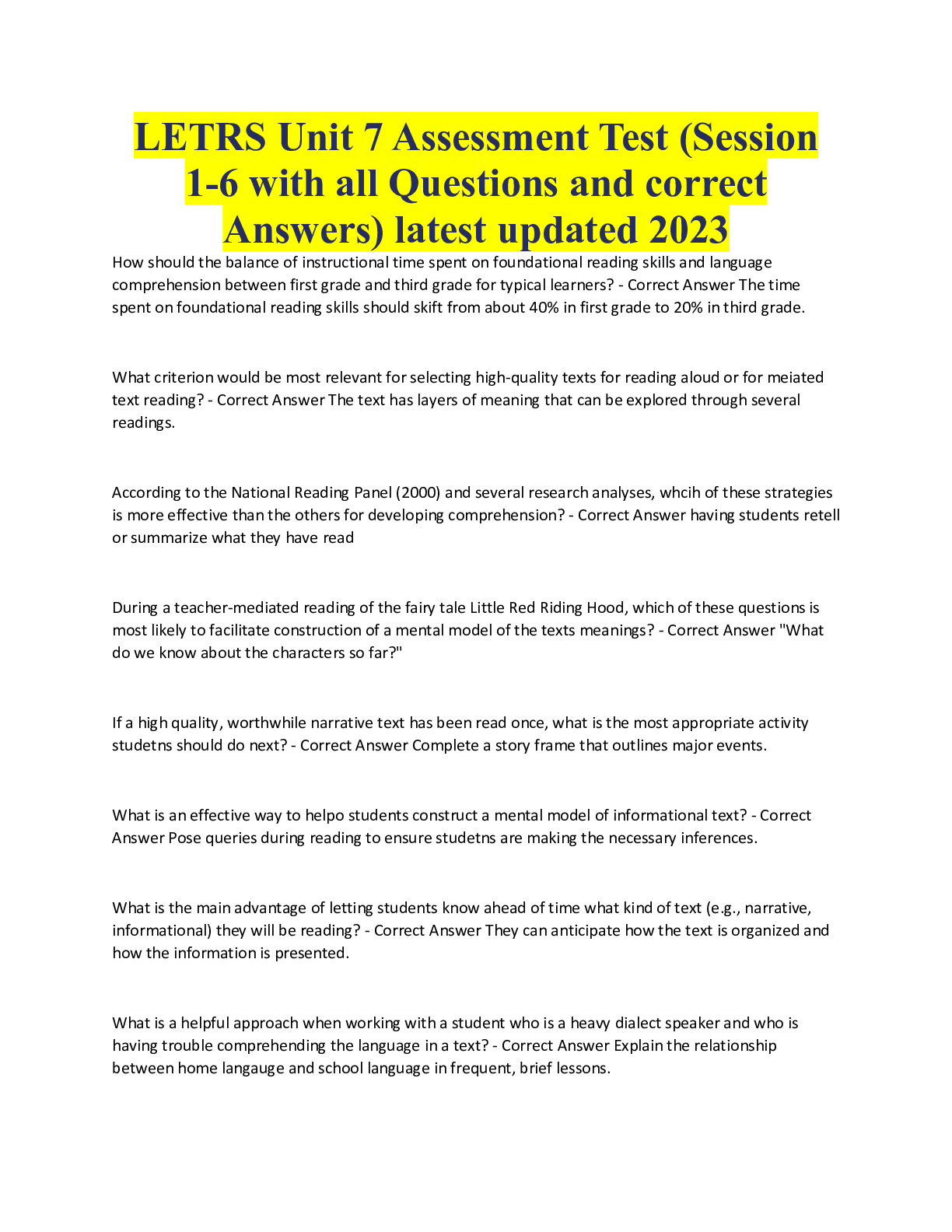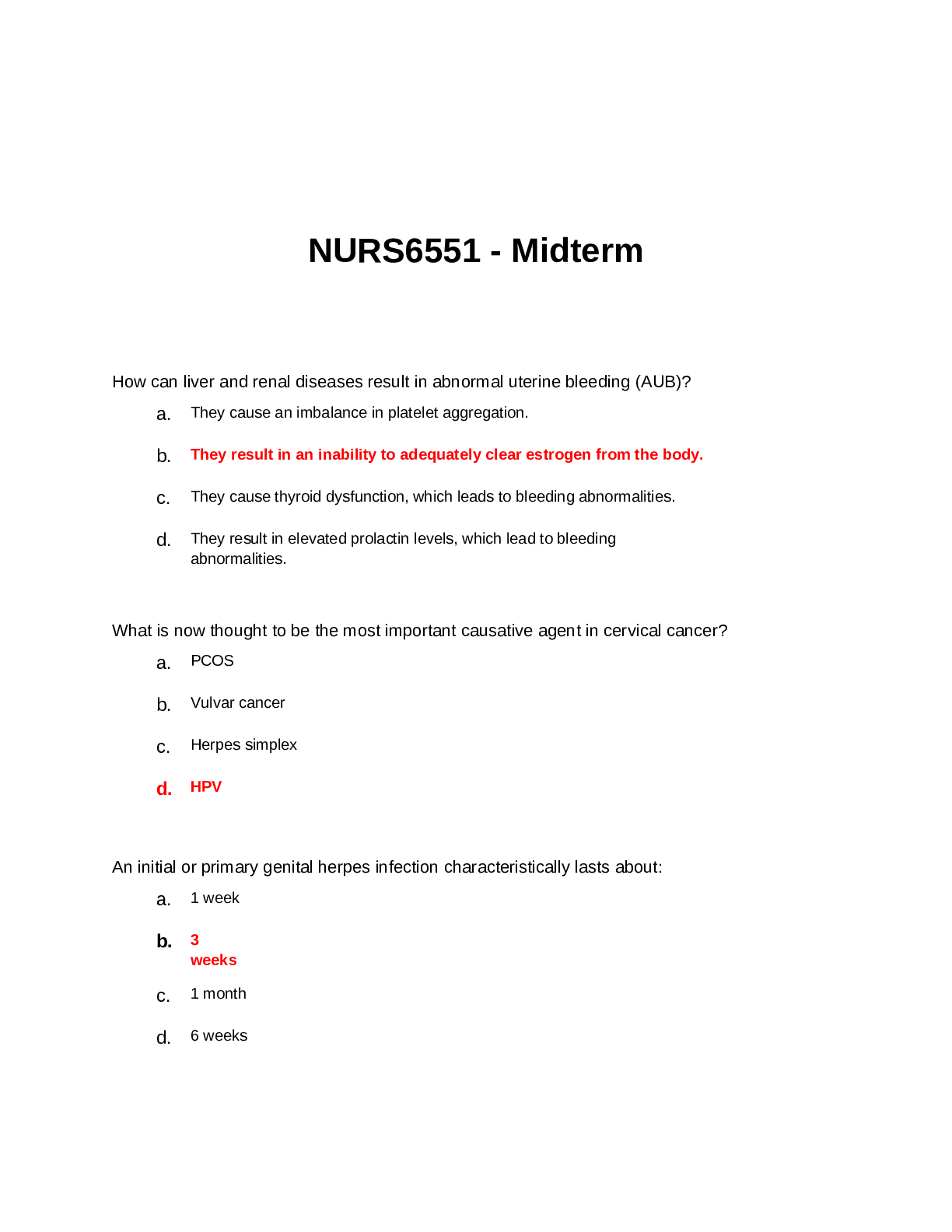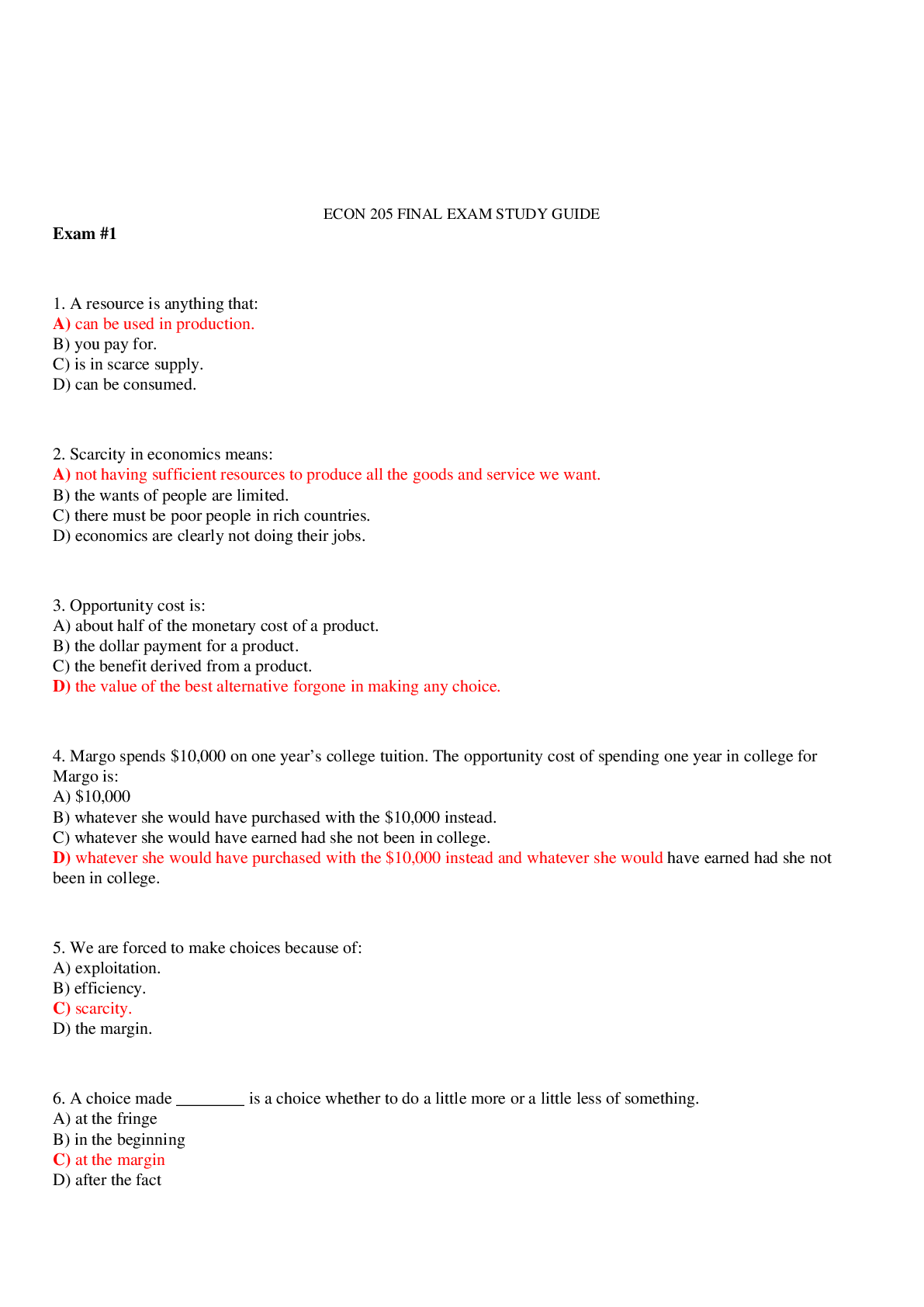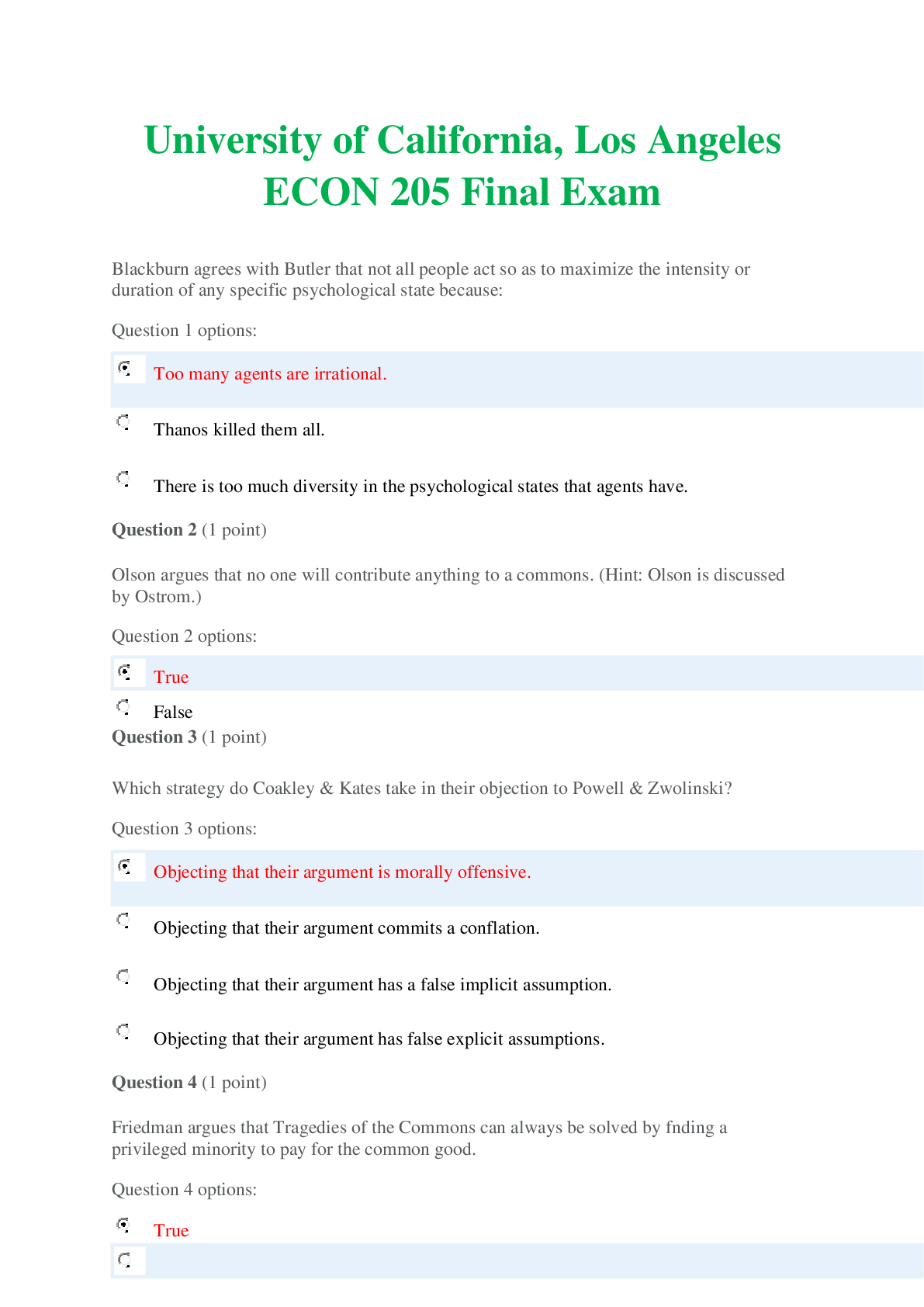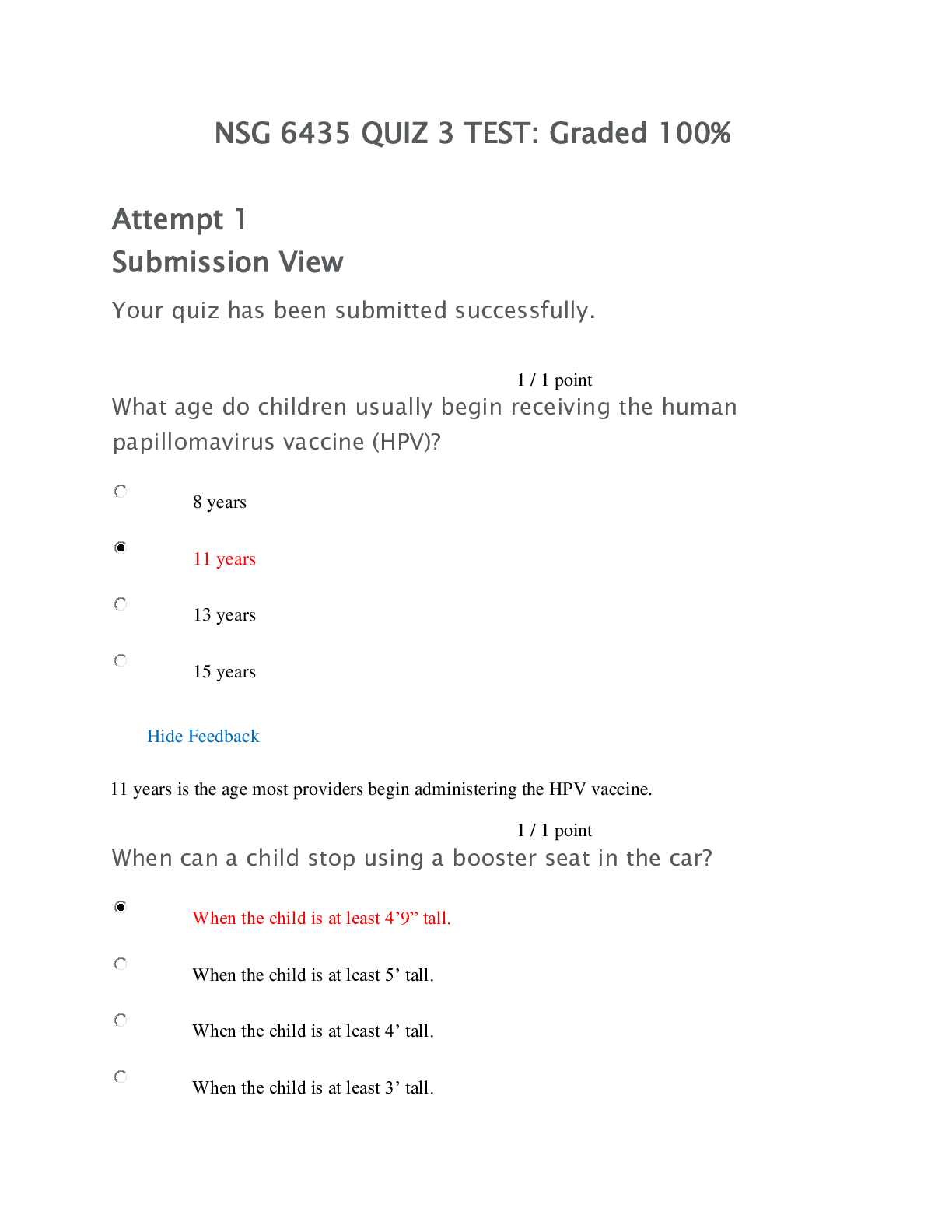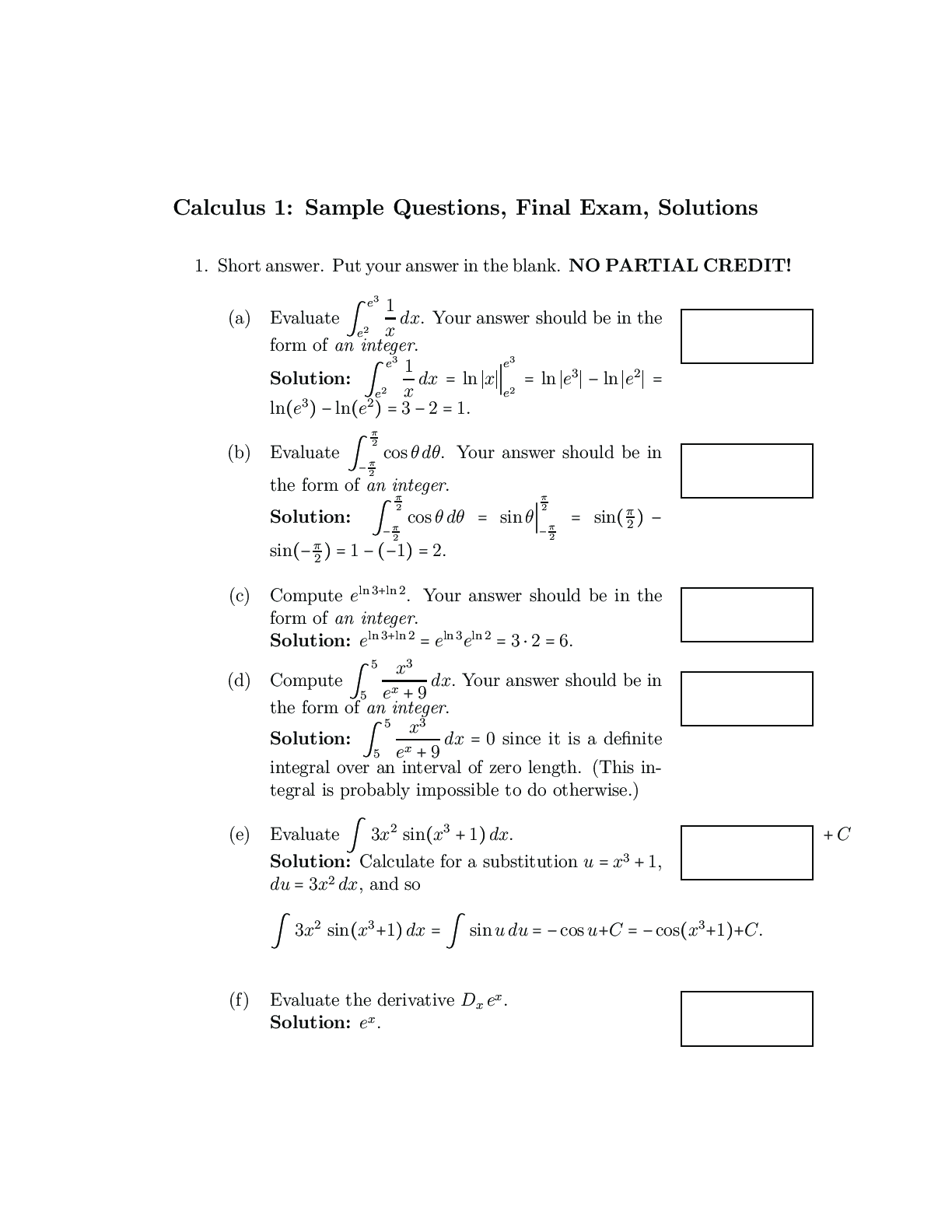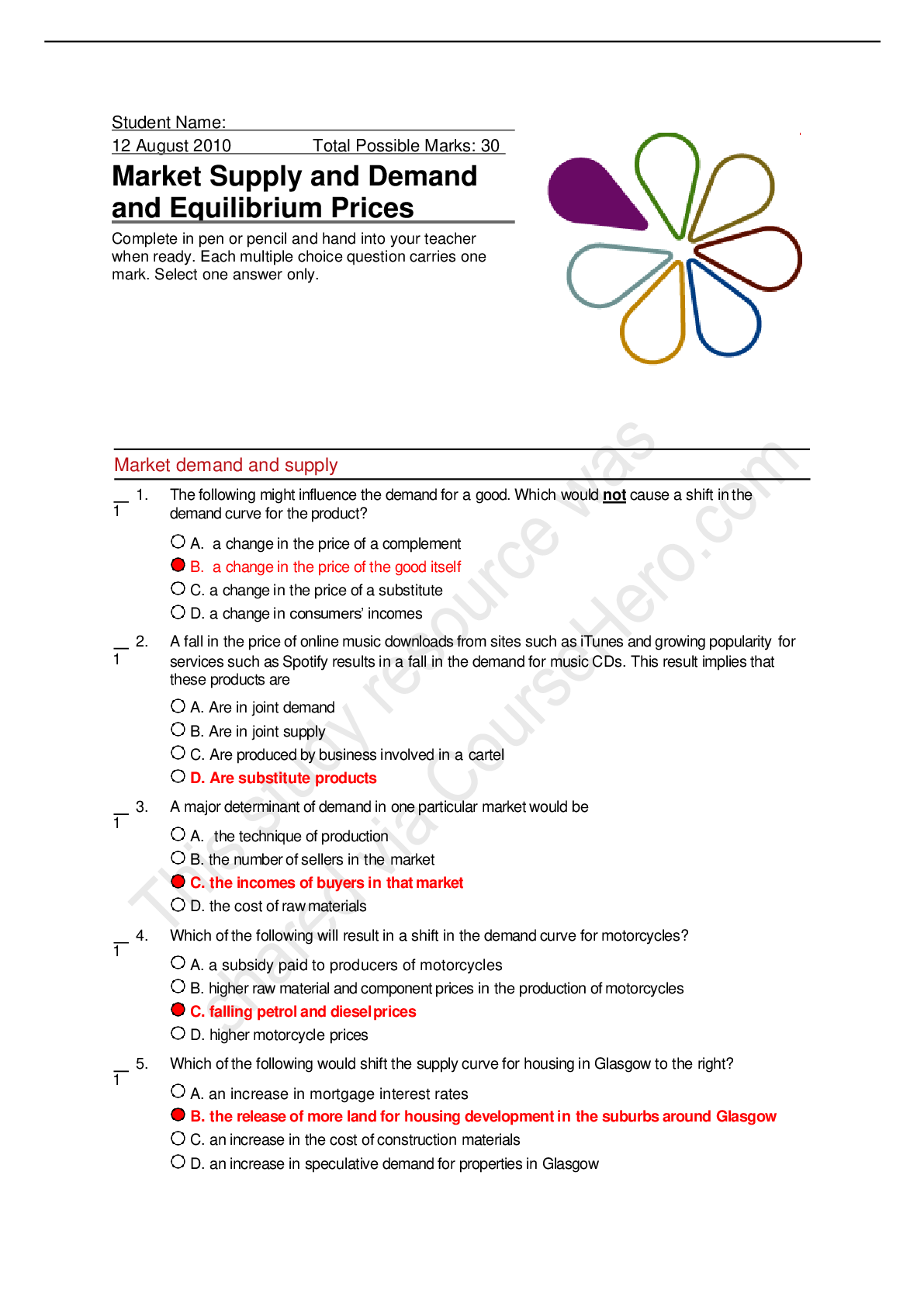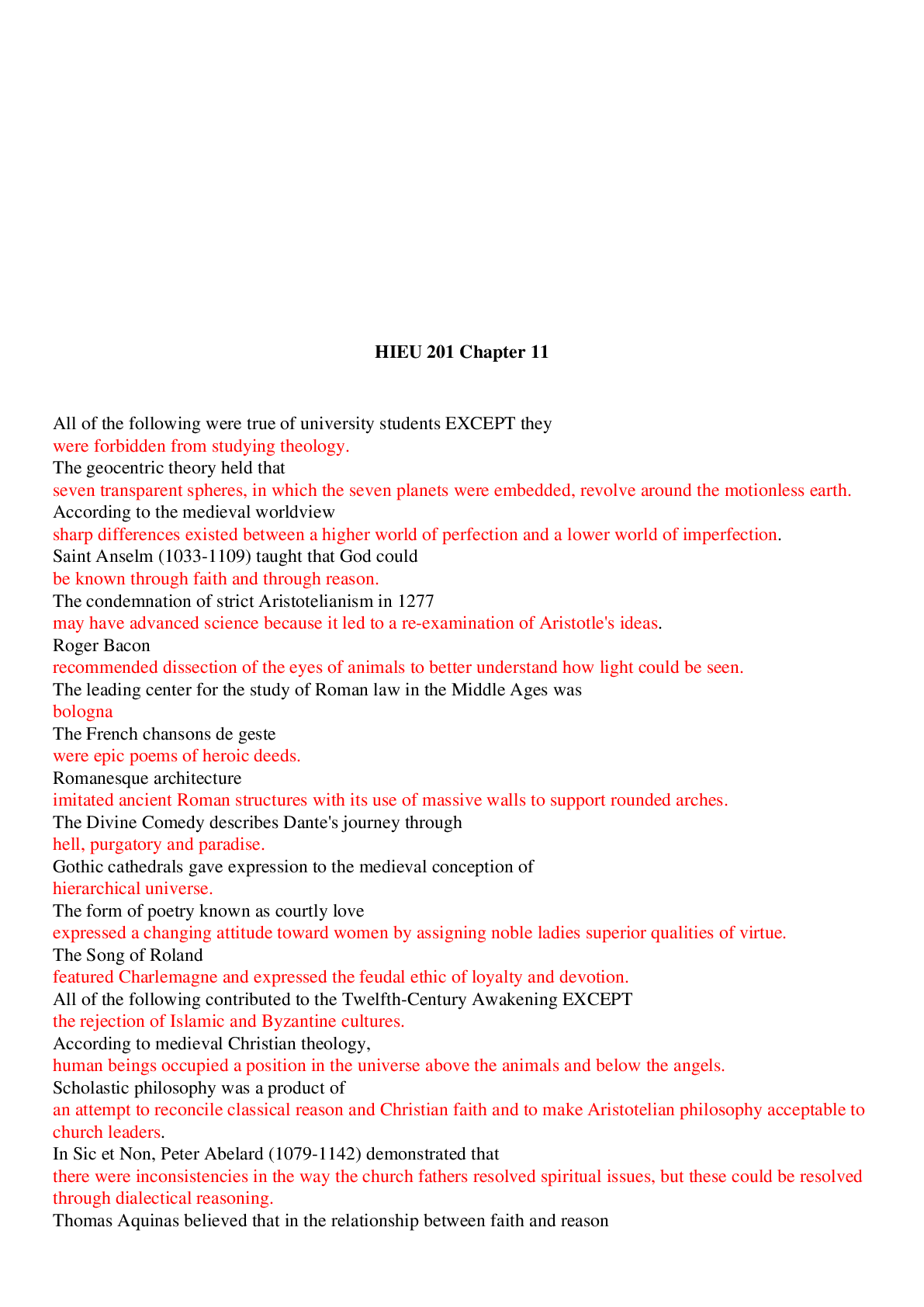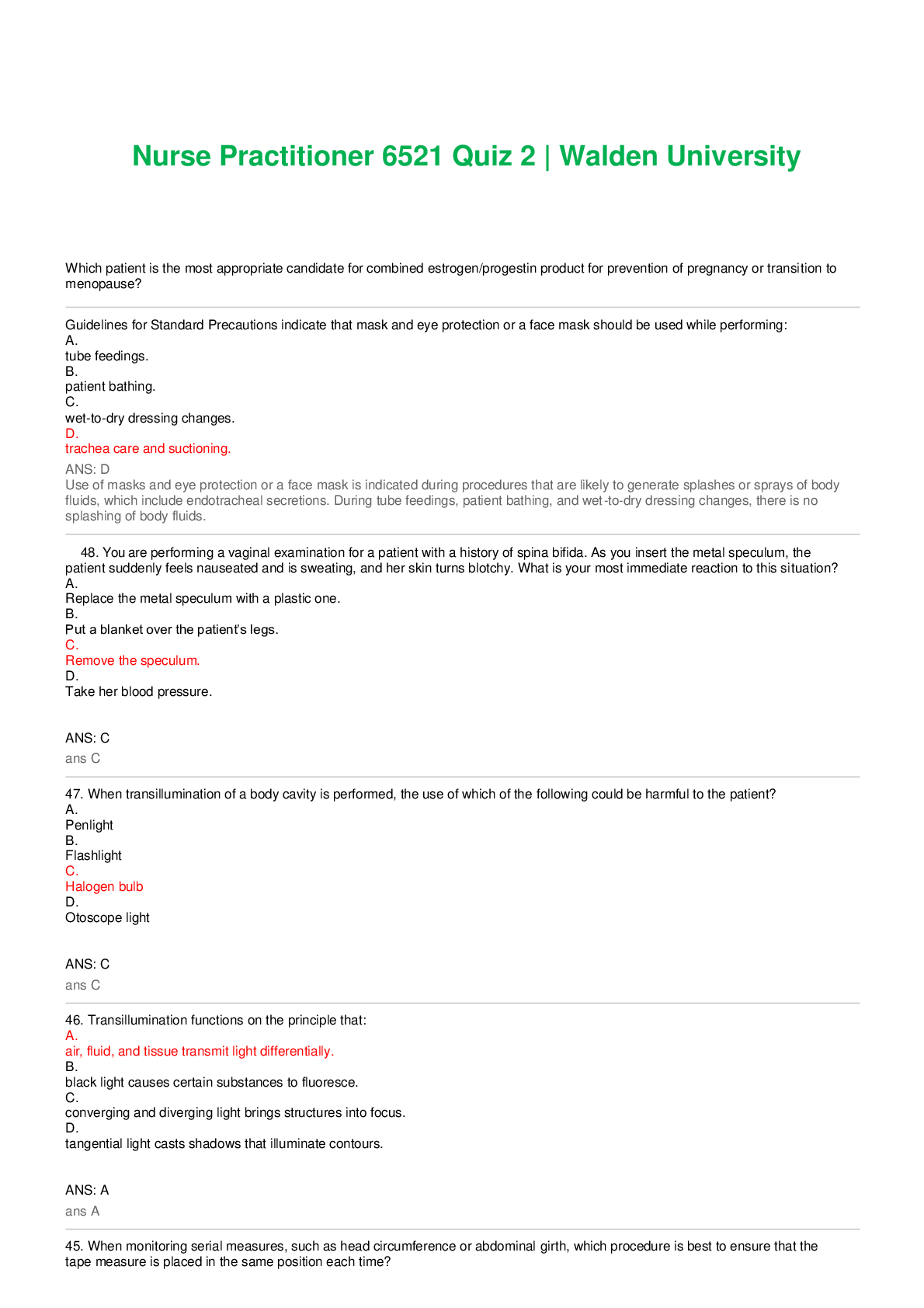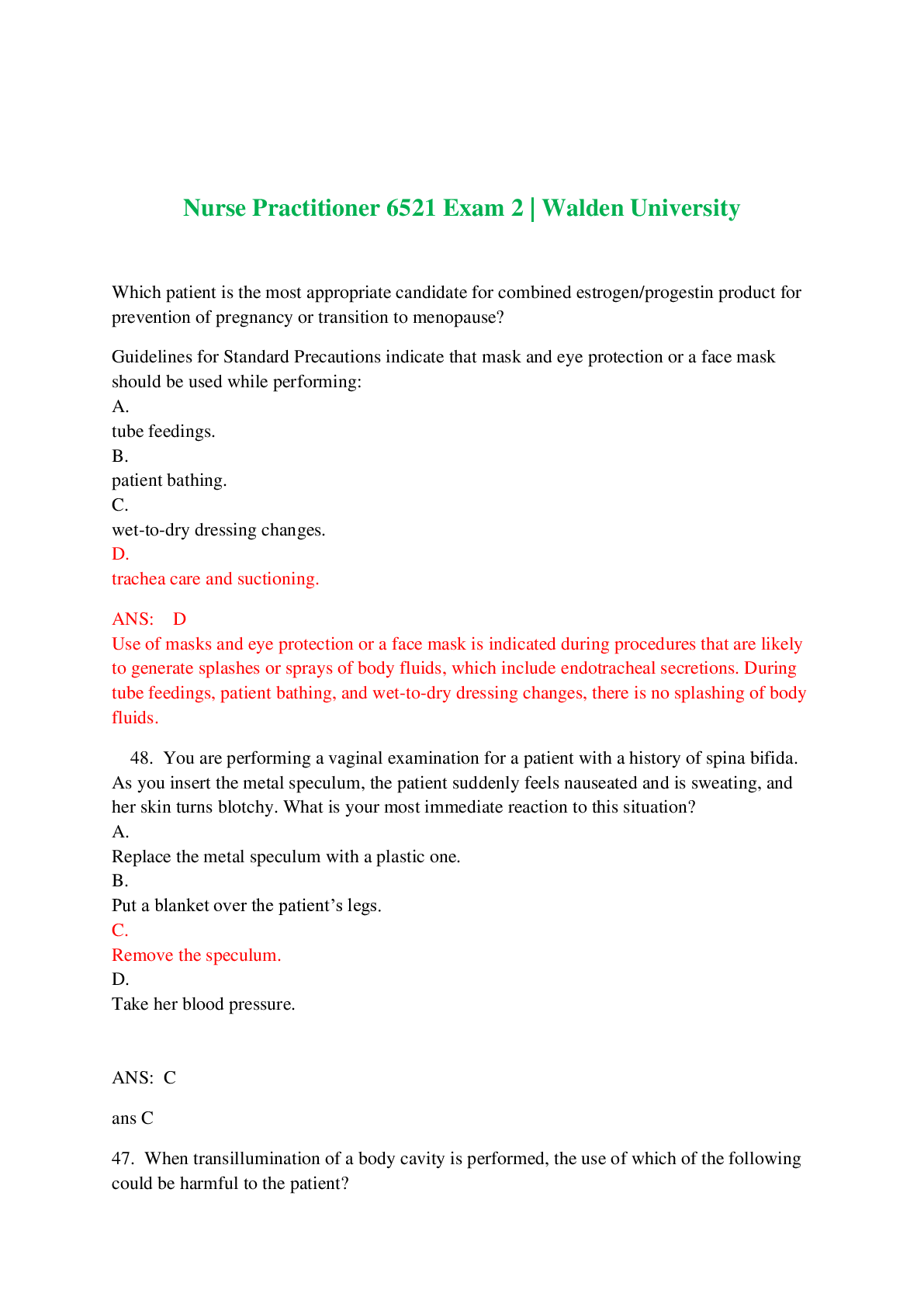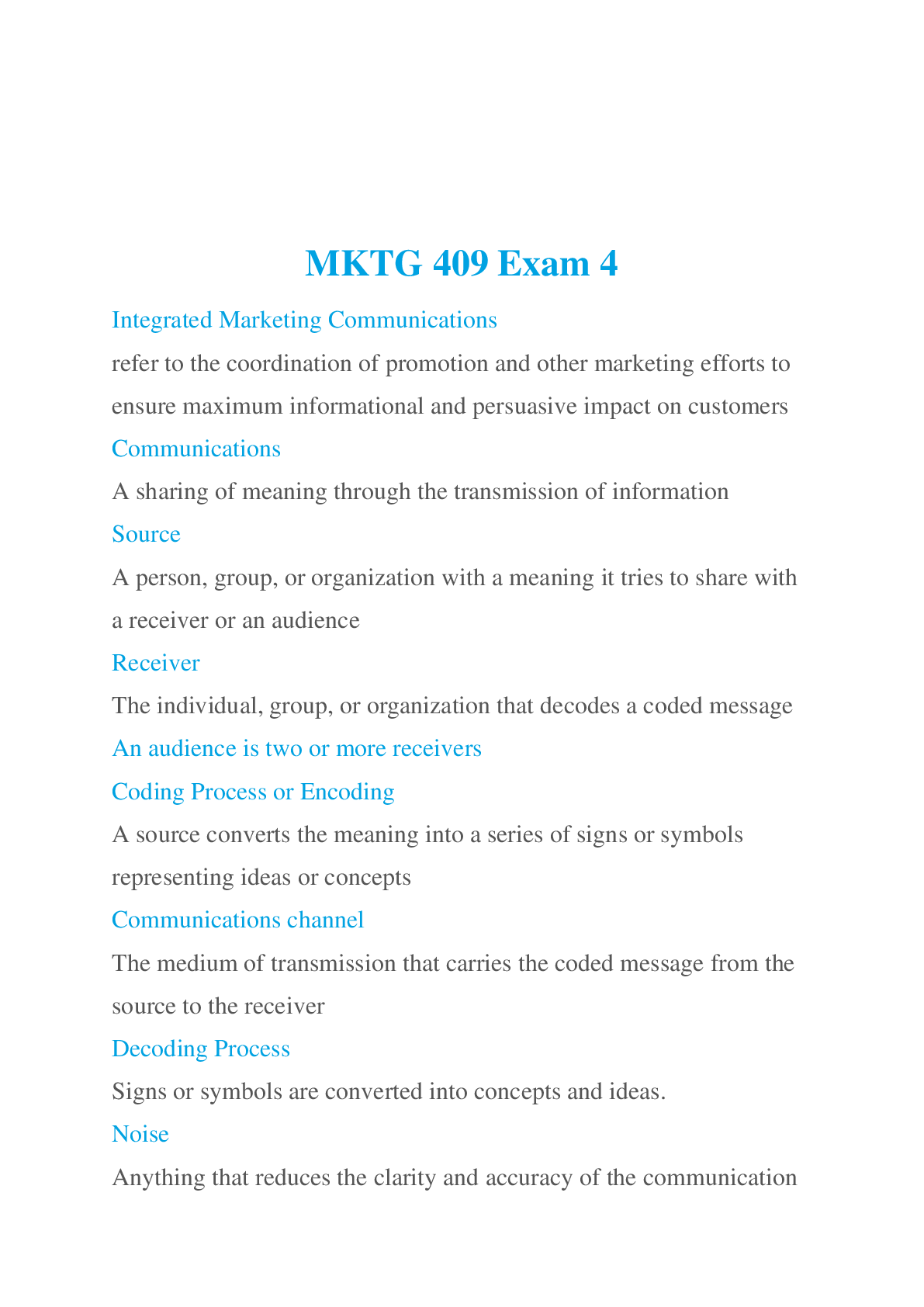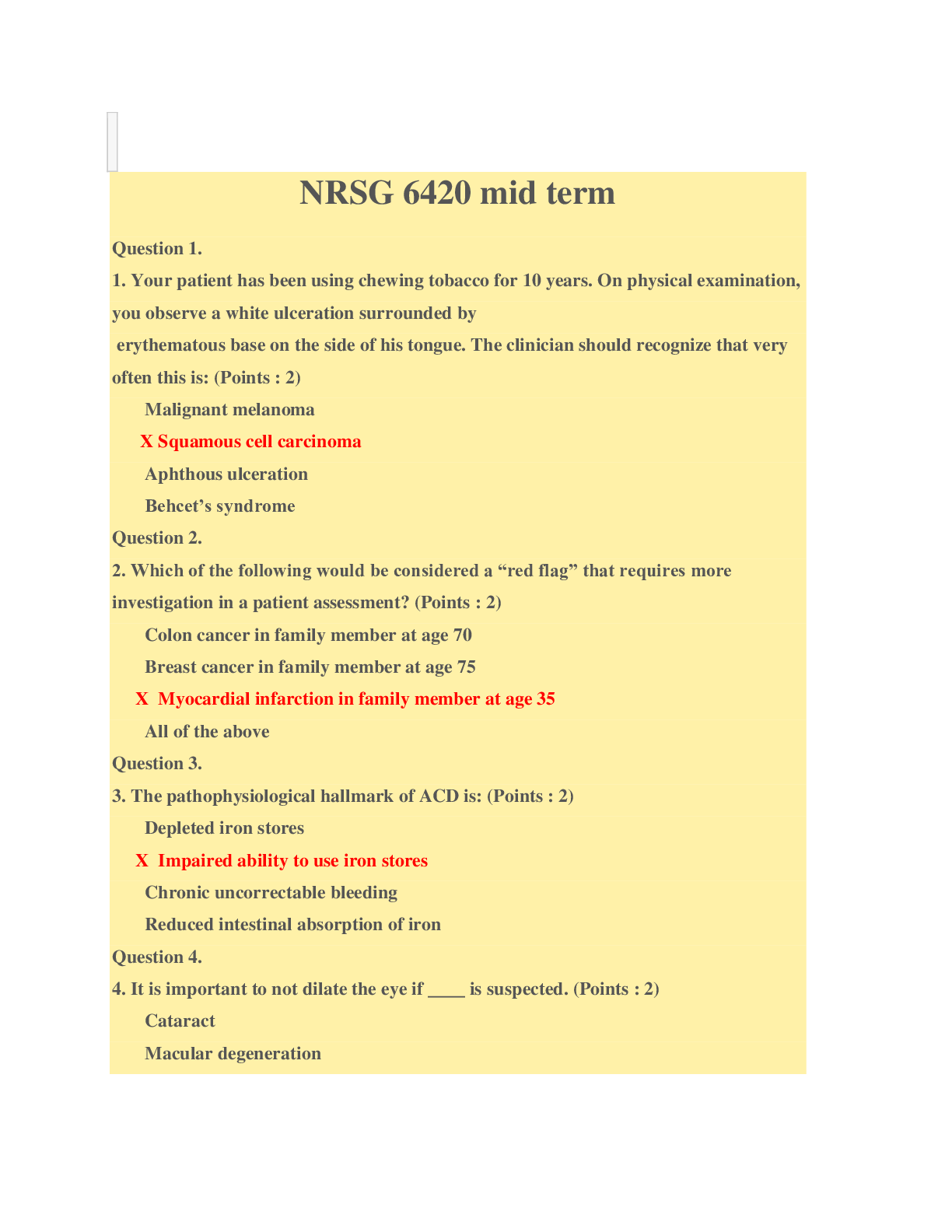Mathematics > EXAM > PSM EXAM 2 Answered (All)
PSM EXAM 2 Answered
Document Content and Description Below
The alpha level determines the risk of a Type II error. (T/F) - ANSWER False What is the consequence of a Type II error? - ANSWER Concluding that a treatment has no effect when it really does A ... researcher conducts a hypothesis test to evaluate the effect of a treatment. The hypothesis test produces a z-score of z = 2.37. Assuming that the researcher is using a two-tailed test, what decision should be made? - ANSWER The researcher should reject the null hypothesis with α = .05 but not with α = .01 What is the relationship between the alpha level, the size of the critical region, and the risk of a Type I error? - ANSWER As the alpha level increases, the size of the critical region increases and the risk of a Type I error increases. In general, the null hypothesis states that the treatment has no effect on the population parameter being studied. (T/F) - ANSWER True A two-tailed hypothesis test is being used to evaluate a treatment effect with α = .01. If the sample data produce a z-score of z = 2.24, then what is the correct decision? - ANSWER Fail to reject the null hypothesis and conclude that the treatment has no effect. Even if a treatment has an effect, it is still possible to obtain a sample mean that is very similar to the original population mean. What outcome is likely if this happens? - ANSWER Fail to reject H0 and make a Type II error. A research report includes the statement, z = 2.13, p < .05. For this hypothesis test, the used null hypothesis is rejected using an alpha level of α = .05.(T/F) - ANSWER True A sample of n = 16 individuals is selected from a population with μ = 60 and σ = 6 and a treatment is administered to the sample. After treatment, the sample mean is M = 63. What is the value of Cohen's d for this sample? - ANSWER 0.50 A researcher is conducting a study to evaluate a treatment that is expected to increase the scores for individuals in a population. If the researcher uses a one-tailed test with a = .01, then which of the following correctly identifies the critical region? - ANSWER z > 2.33 By selecting a larger alpha level, a researcher is ____. - ANSWER increasing the risk of a Type I error A significant treatment effect indicates that a large treatment effect was found. (T/F) - ANSWER False The critical region for a hypothesis test consists of sample outcomes that are very unlikely to occur if the null hypothesis is true. (T/F) - ANSWER True John drives to work each morning and the trip takes an average of µ = 38 minutes. The distribution of driving times is approximately normal with a standard deviation of σ = 5 minutes. For a randomly selected morning, what is the probability that John's drive to work will take less than 35 minutes? - ANSWER 0.2743 Which of the following is not a requirement of a random sample? - ANSWER There must be at least 100 observations . What z-score value separates the top 70% of a normal distribution from the bottom 30%? - ANSWER z=-0.52 A normal distribution has a mean of µ = 24 with σ = 3. What is the minimum score needed to be in the top 14% of the distribution? - ANSWER X = 27.24 A normal distribution has a mean of µ = 100 with σ = 20. If one score is randomly selected from this distribution, what is the probability that the score will have a value between X = 75 and X = 95? - ANSWER 0.2957 A normal distribution ha s a mean of µ = 40 with σ = 10. What proportion of the scores in this distribution are greater than X = 55? - ANSWER 0.0668 For a normal distribution, the z-score boundary that separates the lowest 2.5% of the scores from the rest is z = -1.96. (T/F) - ANSWER True All probabilities can be expressed as decimal values ranging from 0 to 1.00. (T/F) - ANSWER True A random sample of n = 4 scores is obtained from a population with a mean of µ = 80 and a standard deviation of σ = 10. If the sample mean is M = 90, what is the z-score for the sample mean? - ANSWER z = 2 For a normal distribution, what z-score value separates the lowest 25% of the scores from the rest of the distribution? (Draw the picture - this is easier than it looks. If you 'get it', you won't need to use your table...) - ANSWER -0.67 A sample is obtained from a population with μ = 100 and σ = 20. Which of the following samples would produce the most extreme z-score for the sample mean? - ANSWER A sample of n= 100 scores with M = 104 A random sample of n = 36 scores is selected from a population. Which of the following distributions will definitely be normal? - ANSWER The distribution of sample means will form a normal distribution. According to the central limit theorem, the standard error for a sample mean becomes smaller as the sample size increases. (T/F) - ANSWER True [Show More]
Last updated: 3 years ago
Preview 1 out of 4 pages
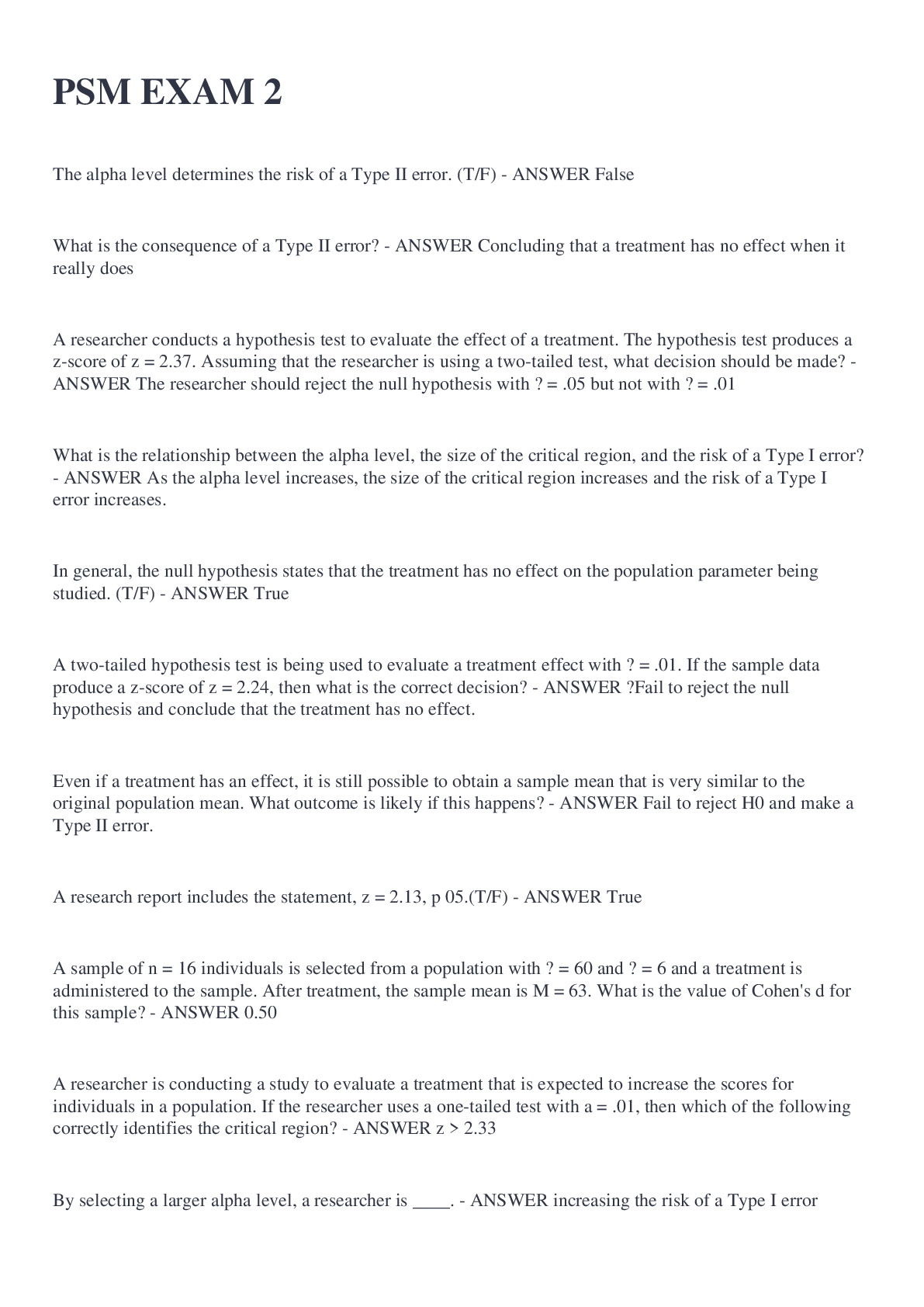
Buy this document to get the full access instantly
Instant Download Access after purchase
Buy NowInstant download
We Accept:

Reviews( 0 )
$8.00
Can't find what you want? Try our AI powered Search
Document information
Connected school, study & course
About the document
Uploaded On
Aug 18, 2022
Number of pages
4
Written in
Additional information
This document has been written for:
Uploaded
Aug 18, 2022
Downloads
0
Views
72


